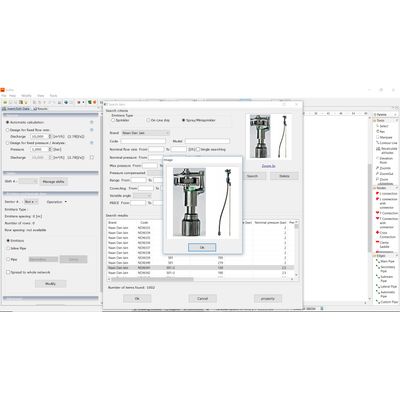


Irriworks - Model IrriPro - Irrigation Design Software
IrriPro is able to know the behavior of the plant and the quality of irrigation calculating the exact solution of the water distribution in each point of the ground, even when this presents any slope, the area to be irrigated is of any shape and the network is composed of several tens of thousands of emitters.
Are you a technician or a designer of irrigation and the tools that you use are too complicated for designing and provide you confusing results? Have you created a system that doesn`t work well and you don`t know why? Are you looking for a powerful tool that can ensure you reliable results in a short time? You`re in the right place, your solution is IrriPro.
IrriPro irrigation software is based on an innovative algorithm that enables the design, management and analysis of irrigation networks and allows a fast and proper sizing of the irrigation systems with the necessary scientific rigor and reducing the time consuming for a project If the morphology of the terrain and irrigation equipment (pipes and emitters) are known, the application allows to carry out the design of a system in few minutes, assisting the user to process and export bill of materials, reports and technical drawings.
markedly.
IrriPro starts from hydraulic and engineering requirements to be met to achieve the technically best project and design. Other applications on the market The software tools on the market and the empirical methods used to date, provide approximate results: the lack of uniformity or worse the deficiency of irrigation in some areas of land have adverse consequences for the development and productivity of crops and in some cases legal disputes between who designs a system and those who cultivate land. , however, work as CAD utility to achieve, at the end and only in few points, an approximate hydraulic check. The irrigation design software IrriPro also provides all the tools for analysis and diagnostics needed to evaluate the effects of each design choice made by the user, the identification of potential malfunctions and allows you to make a graphical representation of the hydraulic size.
- Empirical methods, slow and laborious, which consist in testing, directly in the field, the material to be adopted in the irrigation system;
- Abacuses/graphs or tables provided by manufacturers of materials for irrigation in their catalogs;
- Tedious mathematical procedures that consider only standard and unrealistic through the use of simple or sophisticated spreadsheets;
- Irrigation design software, based on approximate algorithms, usually born for small projects of public green and gardening, which are supported by simplifying assumptions valid for small irrigation systems but less suitable for professional use and for the design of large sizes irrigation systems. These software, based on inaccurate calculation criteria, are more dedicated to the CAD drawing of irrigation systems, rather than a professional complete project equipped with a reliable hydraulic calculation.





